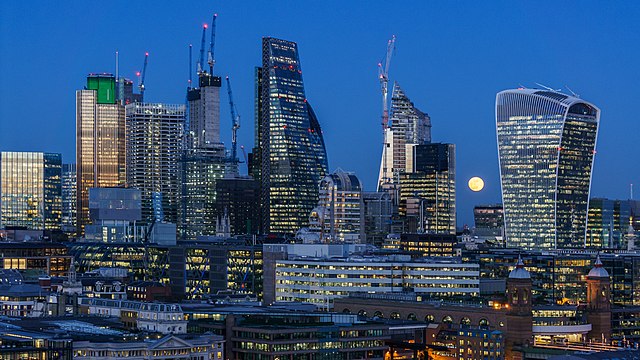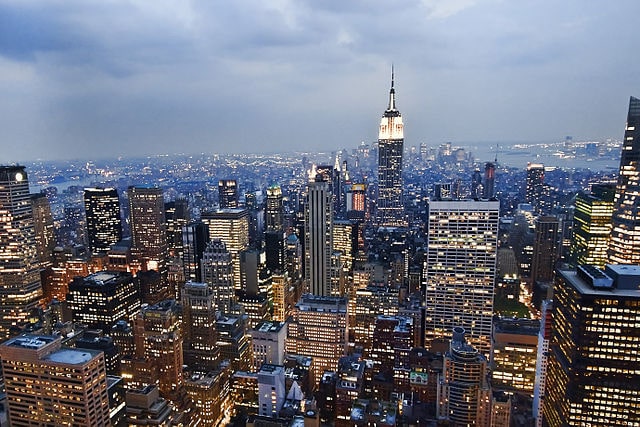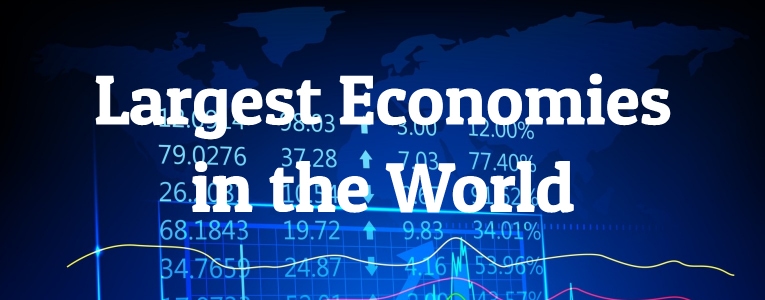Each country’s individual economy comes together to form a global network of trade and prosperity that keeps society thriving. Furthermore, every country has different strengths and weaknesses that vary according to its natural resources and political history. The unique backgrounds of some countries’ economies have enabled them to grow quite large, making names for themselves across the globe.
Today we’ll be exploring the 10 largest economies in the world. These will be ordered according to their nominal GDP, or the annualized measure of each country’s “Gross Domestic Product”. Read on to learn about just how large a country’s economy can get!
-
Canada
Labor Force: 20 million
Financial Center: Toronto
Main Export Partners: USA, European Union, China

Source: wikimedia.org
Canada’s highly developed mixed economy focuses heavily on the service industry, alongside trade of its abundant natural resources. Canada’s main exports are agricultural products, energy, and metals, with beloved Canadian products like maple syrup reaching every corner of the globe.
Did You Know?
Canada’s reliance upon its natural resources is a double-edged sword, with unequal distribution of these resources resulting in uneven growth throughout the country. Industries such as oil production have also taken their toll on Canada’s beautiful landscape.
-
Brazil
Labor Force: 120 million
Financial Center: São Paulo
Main Export Partners: China, European Union, USA

Source: wikimedia.org
Brazil’s mixed economy is the largest in South America, and it stands out by drawing upon import substitution as a source of economic strength. This means that Brazil strives to foster trade independence by producing many of its materials and goods at home. Exports such as coffee, oranges, and sugar make Brazil an important player in world trade.
Did You Know?
Brazil experienced a recession in 2015 and 2016 that was rated to be the worst in its economic history. Government spending was decreased in order to help recover, and labor conditions were finally improved.
-
Italy
Labor Force: 25.94 million
Financial Center: Germany, France, China
Main Export Partners: Germany, France, USA

Source: wikimedia.org
Italy features a diversified industrial economy, with the northern portion of the country being heavily industrialized and productive, and the southern areas being more agriculturally dependent and less wealthy. Tourism and exports such as wine are key components of the Italian economy, as are its chemical and textile industries.
Did You Know?
The Italian economy was far weaker than many others in the aftermath of World War II, and climbed to a much higher position in the global economy with its engineering and metallurgy industries.
-
France
Labor Force: 35.5 million
Financial Center: La Défense
Main Export Partners: Germany, Spain, USA

Source: wikimedia.org
France’s mixed economy features a blend of both private and state enterprises, with a key part of its economic success being attributed to its sizeable aerospace and chemical industries. With France being the most visited country in the world, it also sees lots of profits from tourism.
Did You Know?
Like many other countries, France experienced an economic boom following World War II, which was later dubbed the “thirty years of glory”.
-
India
Labor Force: 527.42 million
Financial Center: Mumbai, Maharashtra
Main Export Partners: European Union, USA, United Arab Emirates

Source: wikimedia.org
India has been said to sport a “developing mixed economy,” due to its status as a developing country. Unfortunately, India has been reported to have troublingly low socioeconomic mobility, meaning that there is little increase in standards of living from one generation to the next.
Did You Know?
India was liberated from the British Commonwealth in 1947, and embraced its freedom as an opportunity for change. Numerous economic changes were initiated in the early 1990’s, sparking economic growth.
-
United Kingdom
Labor Force: 32.4 million
Financial Center: London
Main Export Partners: USA, Germany, Switzerland

Source: wikimedia.org
The United Kingdom’s market-oriented economy has undergone a variety of fluctuations. Beginning in 1993, the UK enjoyed 63 consecutive quarters of economic growth–the longest unbroken growth period recorded. However, the economy suffered greatly from the financial crisis of 2008, experiencing a steeper drop in GDP than that of the Great Depression.
Did You Know?
The United Kingdom has been acknowledged as one of the top few exporters in the world’s economy, with its primary exports including machinery, cars, and pharmaceuticals.
-
Germany
Labor Force: 45.9 million
Financial Center: Frankfurt
Main Export Partners: European Union, USA, China

Source: wikimedia.org
Germany prides itself on a highly developed and successful “soziale Marktwirtschaft,” or “social market economy,” and is a founding member of the European Union. The country takes pride in the freedom within its economy following a distressing past of Nazi oppression.
Did You Know?
Germany’s flourishing culture and beautiful scenery attract a high volume of tourists. As a result, the country’s tourism industry is even larger than its mechanical engineering industry!
-
Japan
Labor Force: 65 million
Financial Center: Tokyo
Main Export Partners: USA, China, European Union

Source: wikimedia.org
Japan’s market-oriented economy owes much of its success to high technology, an admirable work ethic, and an industry-friendly government. Japan experienced promising economic growth following World War II, but then hit a drop in growth and dealt with multiple recessions in 2008.
Did You Know?
Japan’s current Prime Minister, Shinzo Abe, initiated an economic revitalization program in 2013. His approach is known as “Abenomics” and tackles competition, labor, and trade issues.
-
China
Labor Force: 803.6 million
Financial Center: Shanghai
Main Export Partners: USA, European Union, China

Source: wikimedia.org
The People’s Republic of China utilizes a socialist market economy, and boasts the largest economy in the world as measured by purchasing power parity (PPP). A sizeable chunk of China’s economic growth is attributed to low-cost machinery and equipment exports.
Did You Know?
China boasts a population of 1.3 billion people, and has been the largest single contributor to the global economy’s growth since the 2008 financial crisis.
-
United States of America
Labor Force: 162.637 million
Financial Center: New York City, New York
Main Export Partners: European Union, Canada, Mexico

Source: wikimedia.org
The United States economy is the largest economy in the world by nominal GDP. President Donald Trump boasts that it is the “envy of the entire world,” likely uplifted by the fact that the nation’s unemployment rate is the lowest it’s been in 18 years. This capitalist economy has also seen a distinct rise in consumer spending during the past few years.
Did You Know?
Despite concerns brought on by the recession in the United States, there has been a recent bloom of jobs in America. This has resulted in some people hoping that the recession is largely a thing of the past.
